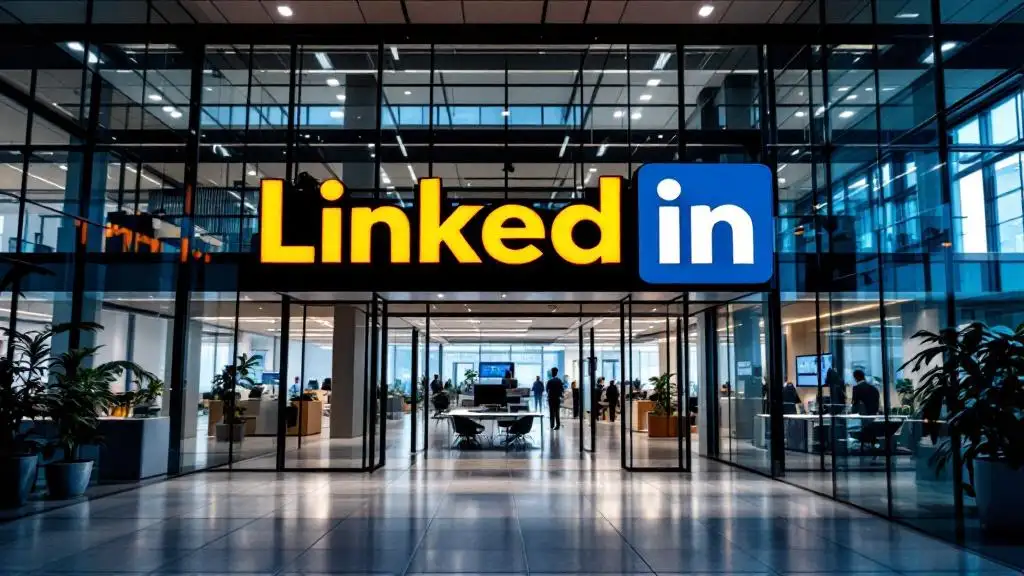The Future of Medical Content Marketing
Healthcare content marketing plays a crucial role in increasing brand awareness and driving conversions.


The Future of Medical Content Marketing
Importance of Healthcare Content Marketing
In the ever-evolving digital landscape, healthcare content marketing has become increasingly important for healthcare organizations to effectively engage with their target audience and achieve their marketing goals. Let's explore two key aspects highlighting the significance of healthcare content marketing: increasing brand awareness and conversions, and targeting health-related searches.
Increasing Brand Awareness and Conversions
Healthcare content marketing plays a crucial role in increasing brand awareness and driving conversions. By creating and distributing valuable and informative content, healthcare organizations can establish themselves as trusted sources of information in their respective fields. This helps to build brand credibility and recognition among their target audience.
For instance, a dental clinic was able to triple their conversions in just six months by leveraging blog posts as part of their content marketing strategy. By providing relevant and educational content, they were able to attract and engage potential patients, ultimately leading to an increase in conversions.
Targeting Health-Related Searches
With the internet witnessing billions of health-related searches every day, it is crucial for healthcare organizations to utilize content marketing to reach potential patients searching for information online [1]. By creating content that addresses common health concerns, provides accurate information, and offers solutions, healthcare organizations can position themselves as go-to resources for individuals seeking answers to their health-related queries.
By optimizing their content for relevant keywords and incorporating search engine optimization (SEO) techniques, healthcare organizations can improve their visibility in search engine results pages (SERPs). This ensures they are present and easily discoverable when potential patients are actively seeking health-related information.
By targeting health-related searches and providing valuable content, healthcare organizations can attract and engage their target audience, foster trust, and establish themselves as authoritative sources in their respective fields.
Understanding the importance of healthcare content marketing in increasing brand awareness, driving conversions, and targeting health-related searches is paramount for healthcare organizations looking to thrive in the digital landscape. By investing in effective content marketing strategies, healthcare organizations can effectively connect with their audience, provide valuable information, and ultimately achieve their marketing goals.
Benefits of Healthcare Content Marketing
Healthcare content marketing offers numerous benefits for healthcare organizations. By leveraging strategic content creation and distribution, healthcare providers can achieve various goals, including dispelling myths, providing education, improving SEO and online visibility, and impacting brand awareness and conversions.
Dispelling Myths and Providing Education
One of the key benefits of healthcare content marketing is its ability to dispel myths and provide accurate, reliable information to the public. By addressing common misconceptions and concerns, healthcare organizations can educate their target audience and promote better understanding of medical conditions, treatments, and preventive care. For example, content marketing can play a crucial role in encouraging individuals to get their flu shots during flu season, leading to increased patient education and better public health outcomes.
Improving SEO and Online Visibility
Healthcare content marketing contributes to improved SEO, helping healthcare organizations enhance their online visibility and reach a larger audience searching for health-related information. By creating high-quality, informative content that aligns with relevant keywords and search queries, healthcare providers can increase their chances of appearing in search engine results. This increased visibility can drive organic traffic to their websites, ultimately attracting more potential patients and establishing credibility in the digital landscape.
According to a survey, 99% of healthcare brands reported positive results with their content marketing efforts, with 33% being very successful and 33% having moderate success. This demonstrates the significant impact of high-quality content relevant to the target audience.
Impact on Brand Awareness and Conversions
Healthcare content marketing plays a pivotal role in building brand awareness within the healthcare industry. By consistently producing valuable and informative content, healthcare organizations can position themselves as thought leaders and trusted sources of information. This increased brand visibility can lead to greater recognition and engagement with the target audience.
Moreover, healthcare content marketing has a tangible impact on conversions. When healthcare organizations provide valuable content that addresses the needs and concerns of their target audience, they build trust and credibility. This trust can ultimately lead to higher conversion rates, whether it's through appointment bookings, subscriptions to newsletters, or other desired actions.
In summary, healthcare content marketing offers multiple benefits, including dispelling myths and providing education, improving SEO and online visibility, and impacting brand awareness and conversions. By crafting informative and engaging content, healthcare organizations can establish themselves as valuable resources, connect with their target audience, and achieve their marketing goals.
Adoption of Content Marketing in Healthcare
As the digital landscape continues to evolve, content marketing has become an increasingly important aspect of healthcare marketing strategies. While healthcare has been relatively slower in adopting content marketing compared to other sectors, recent trends indicate a significant increase in its adoption within the industry, demonstrating that healthcare is ready for content marketing [3].
Adoption Trends in the Healthcare Market
Over the past two years, the adoption of content marketing in the healthcare industry has increased by more than 25%. This upward trend highlights the growing recognition among healthcare providers of the benefits and effectiveness of content marketing strategies.
Healthcare content marketing offers providers the opportunity to capture both local and international search traffic, allowing them to differentiate themselves from the competition. By creating valuable and relevant multimedia content, healthcare brands can connect with a large and interested target audience of patients and healthcare organizations [2].
Advantages of Early Content Marketing Adoption
The fact that medical content marketing has experienced relatively slow adoption rates in the healthcare industry can actually work to the advantage of early adopters. By starting a content marketing strategy now, healthcare providers can position themselves ahead of the curve and establish themselves as leaders in the industry.
According to a survey, 99% of healthcare brands reported positive results with their content marketing efforts. Of these, 33% reported very successful outcomes, while another 33% reported moderate success. These statistics underscore the potential impact and effectiveness of content marketing in the healthcare industry.
A prime example of the power of content marketing in healthcare is the success achieved by Mark Oborn Ltd., a digital dental marketing agency. Through a targeted content marketing strategy focused on blog traffic growth, the agency was able to triple conversions for a dental clinic in just six months. Their approach generated an impressive 19,000 organic visits to a blog post per month, showcasing the immense potential of content marketing for healthcare providers [2].
By embracing content marketing early on, healthcare providers can leverage its advantages to enhance brand awareness, reach their target audience effectively, and ultimately drive conversions. As the healthcare industry continues to recognize the value of content marketing, staying ahead of the game can be the key to success in navigating the digital landscape.
Strategies for Effective Healthcare SEO
To ensure the success of healthcare marketing efforts, implementing effective search engine optimization (SEO) strategies is essential. By focusing on keyword research, high-quality educational content, and leveraging local SEO, healthcare providers can improve their online visibility and attract more patients.
Importance of Keyword Research
Keyword research is a fundamental aspect of successful healthcare SEO strategies. It involves identifying the words and phrases potential patients are likely to use when searching for medical services. By understanding these search queries, healthcare providers can optimize their website content to align with user intent and improve their chances of appearing in relevant search results. Long-tail keywords, which are more specific and targeted, can be particularly valuable in attracting qualified traffic [4].
Role of High-Quality Educational Content
High-quality, educational content plays a crucial role in healthcare SEO strategies. By creating informative and well-researched content, healthcare providers can position themselves as trusted sources of information. It is essential to focus on addressing common medical issues, providing patient care resources, and delivering healthcare-related insights. The content should be easy to understand, avoiding complex medical terminologies that may confuse or overwhelm readers. By consistently producing valuable content, healthcare providers can establish credibility and attract organic traffic to their websites.
Leveraging Local SEO for Healthcare
For healthcare providers operating in specific geographic locations, leveraging local SEO is crucial. Local SEO strategies help optimize online visibility for local searches, increasing the chances of appearing in search results when potential patients look for healthcare services in their area. To maximize local SEO impact, healthcare providers should mention their location in website content, metadata, and Google My Business profiles. This ensures that search engines recognize the geographical relevance of the website and display it prominently in local map searches. Collaborating with local medical associations, health bloggers, and other professionals can also help acquire valuable backlinks from reputable websites, enhancing the overall SEO strategy [4].
By incorporating these strategies into their healthcare marketing efforts, providers can improve their online visibility, attract more patients, and establish themselves as authoritative sources of healthcare information. Effective healthcare SEO involves continuous monitoring, analysis, and adaptation to stay ahead in the competitive digital landscape.
Metrics for Healthcare Marketers
Tracking and analyzing metrics is essential for healthcare marketers to assess the effectiveness of their marketing strategies and make data-driven decisions. By monitoring key metrics, healthcare marketers can gain insights into the performance of their campaigns and optimize their efforts. In this section, we will explore three important metrics for healthcare marketers: tracking marketing campaign metrics, financial performance metrics, and patient acquisition cost and lifetime value.
Tracking Marketing Campaign Metrics
Healthcare marketers should closely track marketing campaign metrics to evaluate the success of various tactics, such as search engine optimization (SEO) and paid advertising. By monitoring these metrics, marketers can assess the performance of their campaigns and identify areas for improvement [5].
Some key marketing campaign metrics to consider include:
- Website traffic: Tracking the number of visitors to your website provides insights into the reach and effectiveness of your marketing efforts.
- Conversion rate: Measuring the percentage of website visitors who take the desired action, such as submitting a contact form or scheduling an appointment, helps assess the effectiveness of your conversion optimization strategies.
- Click-through rate (CTR): CTR measures the percentage of users who click on your ad after seeing it. This metric is particularly relevant for paid advertising campaigns.
- Engagement metrics: Monitoring metrics like bounce rate, time on page, and page views per session helps gauge user engagement with your content.
By regularly analyzing these metrics, healthcare marketers can identify successful strategies and make data-driven decisions to optimize their marketing campaigns.
Financial Performance Metrics
Financial performance metrics are crucial for healthcare marketers to evaluate the overall success of their marketing efforts and their alignment with organizational financial objectives. These metrics provide insights into the return on investment (ROI) of marketing activities and help demonstrate the value of marketing to key stakeholders.
Some important financial performance metrics to consider include:
- Return on investment (ROI): Calculating the ROI of marketing campaigns helps measure the financial impact generated by marketing activities. It compares the cost of marketing efforts to the revenue generated.
- Cost per lead (CPL): This metric calculates the average cost of acquiring a single lead. It helps healthcare marketers assess the efficiency of their lead generation strategies.
- Cost per acquisition (CPA): CPA measures the average cost of acquiring a new patient. This metric provides insights into the financial effectiveness of marketing campaigns.
By closely monitoring these financial performance metrics, healthcare marketers can make informed decisions regarding resource allocation and optimize their marketing strategies for better financial outcomes.
Patient Acquisition Cost and Lifetime Value
Patient acquisition cost (PAC) and patient lifetime value (PLTV) are two fundamental metrics that help healthcare marketers evaluate the success of their marketing strategies.
Patient acquisition cost (PAC) calculates the average cost associated with acquiring a new patient. By analyzing PAC, healthcare marketers can understand the effectiveness of their overall marketing strategy and identify areas where cost efficiencies can be achieved.
Patient lifetime value (PLTV) measures the average amount of money a patient will spend during their relationship with a healthcare practice. Understanding PLTV helps healthcare marketers assess the long-term value of acquiring and retaining patients.
By tracking PAC and PLTV, healthcare marketers can evaluate the financial impact of their marketing efforts and make informed decisions regarding patient acquisition and retention strategies.
Monitoring these metrics empowers healthcare marketers to continuously optimize their campaigns and ensure the effectiveness of their marketing strategies in reaching their goals.
Read about: Medical Entrepreneurship Conferences
Content Formats and Engagement
In the digital landscape of healthcare content marketing, it's essential to employ effective strategies to engage and connect with the target audience. This section focuses on three key aspects: diversifying content formats, building trust through transparency, and optimizing content for search engines.
Diversifying Content Formats
To cater to a wider audience and effectively convey complex medical information, healthcare providers are encouraged to diversify their content formats. Experimenting with various formats allows for engaging different learning styles and preferences. Some effective content formats to consider include:
- Blog posts: Well-written blog posts provide in-depth information, insights, and updates on healthcare topics. They can be optimized for search engines, attracting organic traffic to the website.
- Podcasts: Audio-based content such as podcasts allows for a more conversational and personal approach. It's an effective medium for interviews, discussions, and sharing expert opinions.
- Videos: Visual content, including videos, has a significant impact on engaging and educating the audience. Videos can feature educational content, patient testimonials, and even behind-the-scenes glimpses to humanize the brand and foster a deeper connection.
- Social media posts: Utilizing platforms like Facebook, Twitter, and Instagram, healthcare organizations can reach a broader audience and foster a sense of community. Regular updates, health tips, and success stories can be shared to make the brand more approachable and relatable.
Building Trust through Transparency
Building trust is paramount in healthcare content marketing. To establish credibility and foster a connection with the audience, transparency is key. Here are some strategies to build trust:
- Honest and transparent content: Healthcare content should be honest, accurate, and reliable. Avoid using medical jargon that may confuse the audience. Instead, use plain language to deliver information clearly and understandably.
- Real patient stories and testimonials: Sharing real stories and testimonials from patients can humanize the brand and create a sense of trust. It allows the audience to relate to the experiences of others and see the positive outcomes of healthcare services.
- Behind-the-scenes glimpses: Providing behind-the-scenes glimpses of the healthcare facility, staff, and processes can give the audience a deeper understanding and appreciation of the brand. It showcases the dedication and expertise of the healthcare team.
Optimizing Content for Search Engines
To ensure that healthcare content reaches a wider audience, it is crucial to optimize it for search engines. This involves conducting keyword research to identify relevant terms and phrases that the audience is searching for. By incorporating these keywords strategically into the content, the visibility and reach of the content can be improved. This helps in driving organic traffic to the website as the content ranks higher in search engine results pages.
By diversifying content formats, building trust through transparency, and optimizing content for search engines, healthcare organizations can enhance engagement and connect with their target audience effectively. It is important to continually evaluate and refine content strategies based on audience feedback and evolving trends in the digital landscape.
References
[1]: https://www.mediaplacepartners.com/healthcare-content-marketing-benefits/
[2]: https://www.semrush.com/blog/healthcare-content-marketing/
[3]: https://www.webfx.com/industries/health/hospitals-healthcare/content-marketing/
[4]: https://www.linkedin.com/pulse/effective-strategies-seo-healthcare-marketing-reinvent-digital
[5]: https://www.cardinaldigitalmarketing.com/healthcare-resources/blog/8-metrics-every-healthcare-marketer-should-track/







